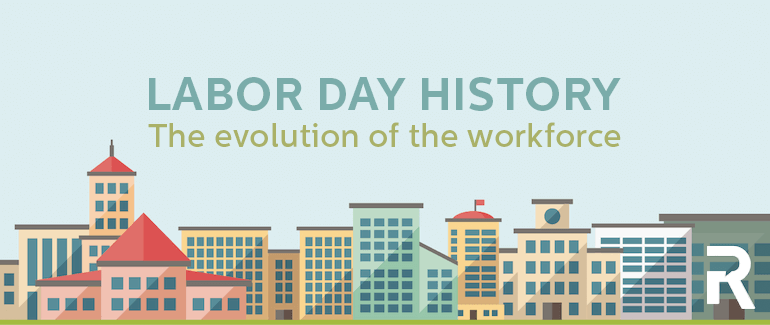
It’s that time of year again. Marked by end-of-summer barbecues, kids going back to school and one last three day weekend to close out the summer, Labor Day Weekend is here at last. Of course it’s a wonderful opportunity to spend time with the family and enjoy nice weather before things start cooling down. But here at Recruiting.com we want to dive deeper, exploring Labor Day as a holiday but also take the opportunity to survey the working world and how it’s changed through the years.
According to the US Department of Labor, Labor Day is a creation of the Labor Movement and is dedicated to the social and economic achievements of the American worker. It stands as a tribute to the contributions workers have made to the strength, prosperity and well-being of the United States. Labor Day was first celebrated in 1882 in New York City; by June 28th, 1894, support for Labor Day had grown so strong that Congress passed an act declaring the first Monday in September a legal holiday.
As hiring managers and HR professionals, we play an active and intimate role with the labor force, and our practices have changed along with the work force through the years. Here are just a few ways we’ve seen the hiring landscape change in the last few decades:
Long gone (mostly) are the days of the “Help Wanted” sign. Most jobs can now be found on the thousands of job platforms out there today. Now it’s our job to be sure our job postings are in the right place and targeting the right people.
Thanks to the internet we’re now able to find out a lot about candidates before they even come in for an interview. But this goes both ways! Make sure you’re taking control of what your candidates are seeing about you online.
There’s a myriad of digital and online tools out there to help us manage our talent acquisition process. We’ve moved past the days of faxed/mailed resumés and want ads in the newspaper and now have even more sophisticated processes to help us recruit the best talent.
They come in all shapes and forms now. From videos to websites, candidates have all new ways to demonstrate their skills. Likewise, employers are now using video more than ever to attract candidates to their openings.
The Web is king of the workplace. Chances are your office doesn’t send nearly as many faxes or typed up memos as it does calendar invites, IMs and emails.
\According to the Department of Labor, 57 percent of women and 70 percent of women with children under 18 now participate in the labor force. In fact, women’s participation in the workforce increased by 53 percent between 1963 and 2012. Looking back, women were once considered minorities in the workplace, and it’s important to consider how diversity can add value to any work environment.
We now have five generations participating in the workforce: The Silent Generation (born 1927-1945), Baby Boomers (1946-1964), Generation X (1965-1980), Millennials/Gen Y (1980-2000), Generation Z ( 2001- present). This requires increased flexibility and agility on the part of the hiring manager to ensure we’re reaching our intended audience effectively.
By 2013, nearly 30 million Americans worked from a home office at least once a week, with that number expected to increase 63 percent by 2018. According to the New York Times, telecommuting rose 79 percent between 2005 and 2012. As recruiters, we must balance our company's expectations with our candidates’ expectations, but should also be willing to grow with the times.
Today, offices come in many varieties and are far from uniform. Some have abandoned cubicles and even job titles altogether, while others have banned things like status meetings and shaken up traditional reporting structures. Every workplace is different and its benefits lie in how those characteristics align with culture. In the end, the important thing is to know what environment a job-seeker is looking for and how that matches with your company.
Whether you’re a recruiter or candidate, chances are you have a social media account. This has changed the way candidates market themselves to employers and how employers vet candidates. Not to mention these tools are now heavily used in sourcing!
These are just a few of the hundreds of ways we’ve seen hiring change in the recent past. It’s an exciting time to be in HR, and we can’t wait to see what the next 120 years have in store for the labor force.
For information, check out The Evolution of the Workforce infographic.